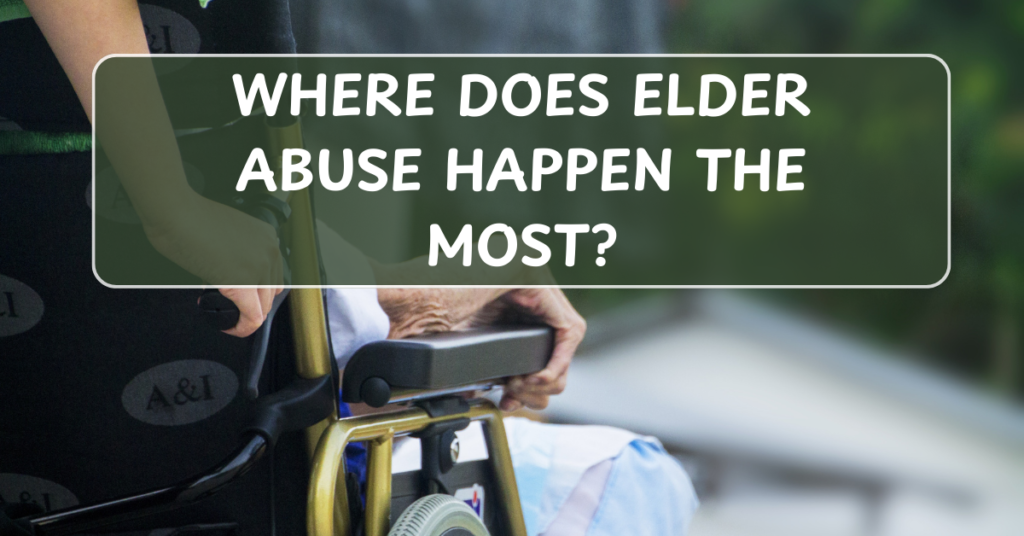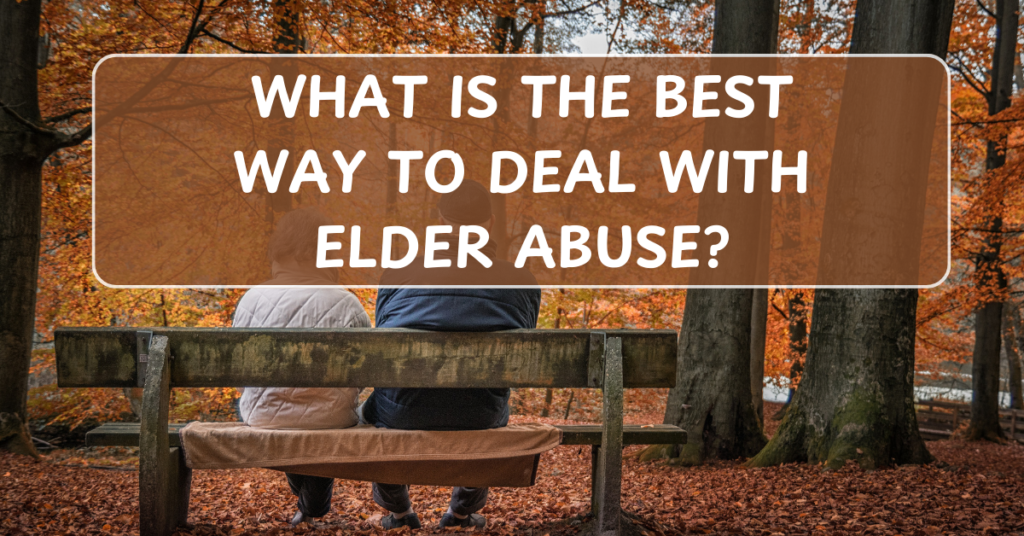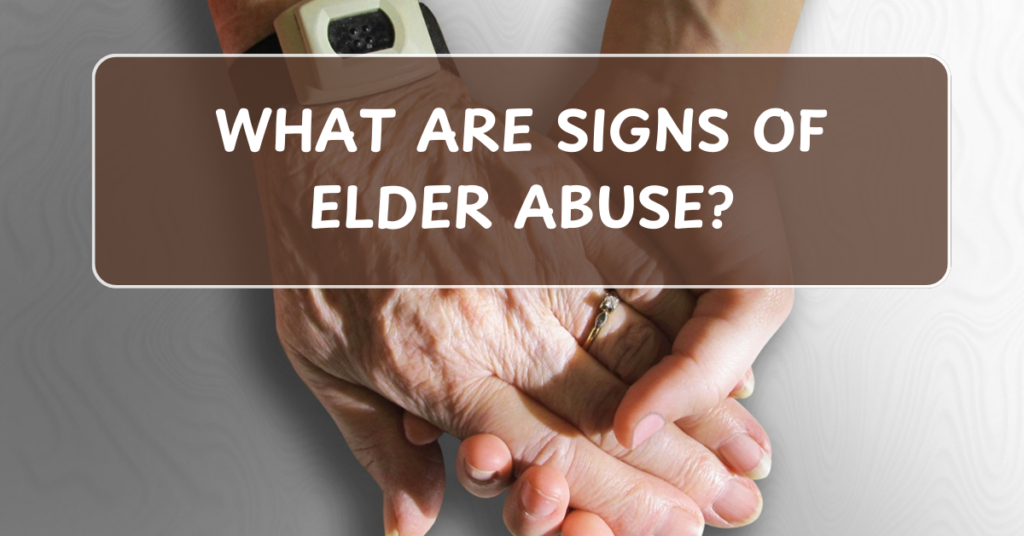
Elder abuse can occur in various environments, but certain settings are more prone to incidents due to factors like isolation, dependency, and lack of oversight. Understanding where elder abuse is most likely to occur can help in preventing and addressing the issue effectively.
1. In the Home (Family Caregiver Settings)
The majority of elder abuse occurs in the home, often at the hands of family members or caregivers. The home setting can provide a sense of privacy, making it harder for abuse to be detected.
Why It Happens:
- Caregiver Stress: Family members who take on caregiving responsibilities may experience stress, burnout, or financial strain, leading to neglect or abusive behavior.
- Isolation: Elders who live alone or with an abuser may be isolated from the outside world, making it difficult for anyone to recognize or intervene in the abuse.
- Lack of Resources or Support: Caregivers often lack proper training or resources, which may lead to improper care, neglect, or mistreatment of the elder.
2. Nursing Homes and Assisted Living Facilities
Institutional abuse is a significant concern in nursing homes and other long-term care facilities. These environments can sometimes foster abuse due to understaffing, lack of proper training, and poor management.
Why It Happens:
- Overworked and Underpaid Staff: Care facilities often face high staff turnover, underpaid employees, and burnout, which can lead to neglect or abusive behavior.
- Lack of Oversight: In some cases, inadequate supervision or policies can make it easier for abuse to go unnoticed, especially in facilities that may be more focused on cutting costs than on providing quality care.
- Overcrowded Facilities: When nursing homes are over-crowded, caregivers may not have the time or energy to provide the level of care necessary for each resident, leading to neglect or even physical abuse.
3. Hospitals and Healthcare Settings
While hospitals and healthcare settings are typically associated with caring for the sick and elderly, they can also be places where elder abuse occurs, often under the radar.
Why It Happens:
- Physical and Mental Stress: The demanding nature of healthcare jobs, combined with a lack of sufficient training or emotional support, can lead to caregivers taking out their frustrations on vulnerable patients.
- Understaffing: Hospitals or medical facilities may be understaffed, leading to neglect, especially for elderly patients who require extra attention.
- Overreliance on Medication: Elder abuse can also occur when medical professionals overmedicate or fail to properly manage medication for elderly patients, leading to physical harm or neglect.
4. Financial Settings (Elder Financial Exploitation)
Elder financial abuse often occurs in the elder’s home, but it can also happen in banking institutions, investment settings, or other financial environments.
Why It Happens:
- Trusting Relationships: Abusers, often family members, caregivers, or close friends, take advantage of the elder’s trust to steal money or manipulate financial resources for their own gain.
- Isolation and Dependency: Elders who are financially dependent on others or isolated from their community may be at higher risk of financial exploitation.
- Cognitive Impairment: Older adults with dementia or other cognitive impairments may be more vulnerable to financial exploitation due to their inability to manage finances or recognize scams.
5. Adult Day Care Centers
Though adult day care centers are designed to provide care for seniors while their families are at work or attending to other responsibilities, abuse can still occur in these settings.
Why It Happens:
- Lack of Training: Some day care centers may not provide proper training for staff, resulting in a lack of understanding regarding how to care for elderly individuals, particularly those with dementia or other cognitive impairments.
- Inadequate Supervision: With multiple clients and limited staff, day care centers may have difficulty providing the level of supervision needed to prevent neglect or abuse.
- Overcrowding: Like nursing homes, overcrowded day care centers can strain resources, which may contribute to elder abuse.
6. Homeless Shelters
Elderly individuals who are homeless or living in poverty may be at a higher risk of abuse due to their vulnerable circumstances. Many may be isolated, struggling with mental or physical health problems, and may face mistreatment in shelters.
Why It Happens:
- Vulnerability: Homeless seniors are often in a weakened state, both physically and mentally, making them easy targets for abuse.
- Lack of Support: Homeless shelters may not always have the resources or training to provide appropriate care for elderly individuals, which can result in neglect or exploitation.
- Isolation: Homeless seniors may also have limited access to social support systems, making it harder for others to notice or intervene in cases of abuse.
7. In the Community (Social Isolation)
Elder abuse can happen when older individuals are socially isolated and have little interaction with others who might notice signs of abuse. Isolation can occur in both family settings and through personal choice or circumstances.
Why It Happens:
- Lack of Social Interaction: Elders who have no family or friends nearby are at a higher risk of being abused since there may be no one to intervene or report the abuse.
- Increased Dependence: When seniors live in isolation, they may become more dependent on caregivers or neighbors, making them more vulnerable to manipulation or mistreatment.
- No Oversight or Reporting Mechanism: Without regular social visits or care from outside sources, abuse can go unnoticed for long periods of time.
Conclusion
Elder abuse can happen anywhere, but it is most common in environments where elders are highly dependent on others, such as their own homes, nursing homes, or healthcare settings. The vulnerability of elderly individuals, coupled with caregiver stress, financial dependency, and lack of proper oversight, all contribute to the prevalence of elder abuse. By increasing awareness, improving care standards, and ensuring stronger protections for elders in these environments, we can help prevent abuse and ensure that older adults live in safety and dignity.


